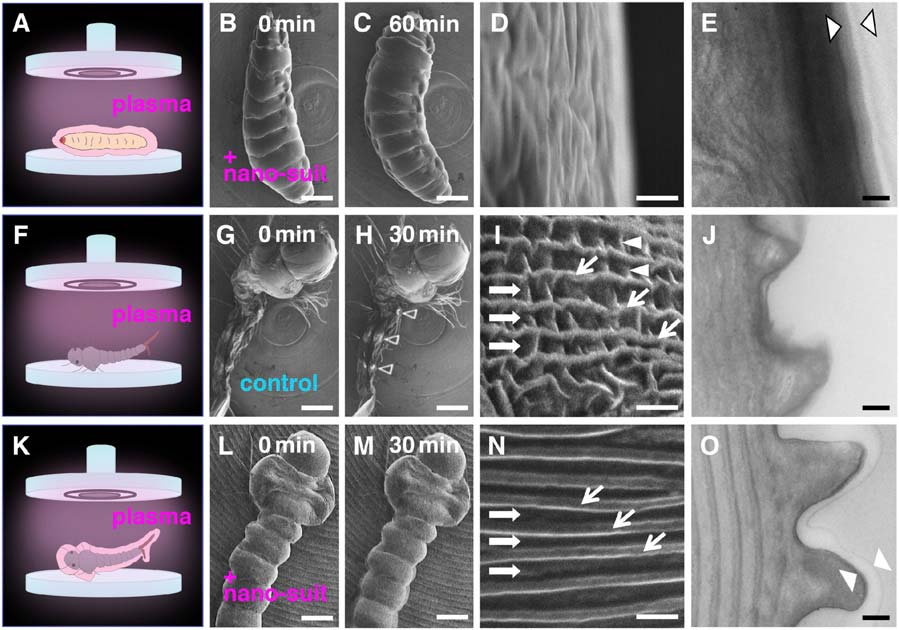Gooey Suits Help Teensy Critters Survive Space Conditions

A suit a thousand times thinner than a human hair or more can help microscopic animals survive a harsh vacuum, such as would be the case in outer space, researchers say.
These newly developed "nano-suits" could help biologists investigate creatures in exquisite detail in a vacuum that would normally kill the animals. The discovery might even suggest alien life could survive journeys through space, researchers speculated.
Moreover, the scientists note the level of vacuum they experimented with is nearly the same level of vacuum experienced by the International Space Station. "We want to send animals wearing nano-suits to space," biologist Takahiko Hariyama at the Hamamatsu University School of Medicine in Japan told LiveScience. ['Alien' Life on Earth: 8 Bizarre Creatures]
Scientists would like to analyze live organisms with scanning electron microscopes, devices that can yield images with better than 1 nanometer, or billionth of a meter of detail. However, the electron beams these microscopes use to scan objects need to work in a vacuum, which is hostile to most life, rapidly causing dehydration and death as vital bodily fluids and gases leak out.
Hariyama and his colleagues were curious how long animals might live while analyzed with scanning electron microscopes. The researchers hoped they might have enough time to make valuable discoveries about the fine details of how these creatures behaved before they succumbed to a vacuum.
Surprisingly, the scientists found that fruit fly larvae apparently tolerated high vacuum well. Peering at these animals under a microscope, Hariyama and his colleagues discovered the creatures owed their survival to flexible coatings that sealed their bodies against the vacuum, ones just 50 to 100 nanometers thick, or 1,000 to 2,000 times thinner than the average diameter of a human hair. These nano-suits were apparently made from the goo that naturally covered the bodies of these insects, which transformed into defensive barriers once treated with the electron beams from the microscope.
The researchers discovered that if they covered organisms that did not ordinarily have gunk on their surfaces with nontoxic detergents, electron beams or energetic clouds of plasma could turn such artificial coatings into protective nano-suits as well. Other animals tested in this manner included fly maggots, mosquito larvae, honeybees, flatworms and ants.
Get the world’s most fascinating discoveries delivered straight to your inbox.
"In our experiment, the animals, mainly insects, could survive for one hour without oxygen," Hariyama said.
The scientists found that live animals protected by nano-suits looked completely different from conventional specimens killed before study. Bodily fluids in the live creatures apparently kept body parts intact, while conventional specimens looked wrinkled in comparison, suggesting that nano-suits could help biologists see life with incredible detail as it really is, not marred by changes wreaked by death.
"Many scientists can expect many new scientific discoveries with our method or by improving our method," Hariyama said. "When we can observe movements and interactions in fine structures, we are able to understand the mechanisms and to make fine engineering devices. When we understand things in detail, we can control many diseases."
The researchers noted that outer space is filled with electrons and plasma. As such, one might speculate that life that got blasted off the surface of a planet into space might conceivably develop protective nano-suits when exposed to such radiation, helping protect them against a vacuum, Hariyama said.
"Since the time of Darwin, many hypotheses for the early evolution of life have been proposed, including the panspermia hypothesis that simple life forms can travel widely through the universe," Hariyama said.
The scientists detailed their findings online today (April 15) in the journal Proceedings of the National Academy of Sciences.
Follow us @livescience, Facebook & Google+. Original article on LiveScience.com.

